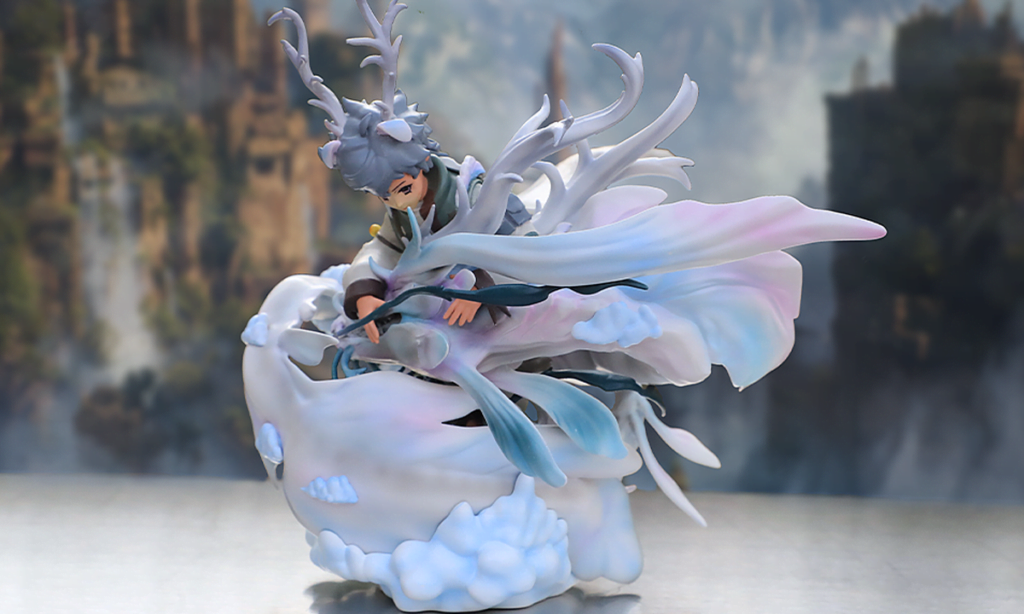Resin Material
One of the primary ingredients in resin character sculptures is resin, a plastic-like polymer material that can be molded through injection, casting, or manual shaping. Common types of resin include epoxy resin, polyurethane resin, and acrylic resin. These resins exhibit different characteristics such as transparency, hardness, and durability, allowing artists to choose the appropriate resin based on their needs.
Pigments and Colorant Additives
To give resin character sculptures vibrant colors, artists typically use pigments and colorant additives. Pigments adjust the resin’s color, while additives alter its texture and gloss. The meticulous combination of these materials enables artists to create lifelike resin characters with intricate details and rich hues.
Fillers and Reinforcement Materials
To enhance the strength and durability of resin character sculptures, fillers and reinforcement materials are sometimes added. Common choices include fiberglass, carbon fiber, and metal powders. These materials can make the resin sculpture more robust, suitable for various display and storage environments.


Mold Materials
When crafting resin character sculptures, molds are often essential. The choice of mold material is crucial for the quality and detail of the final piece. Common mold materials include silicone and polyurethane. Silicone molds, known for their softness and high-temperature resistance, capture intricate details, while polyurethane molds are typically used for mass production of identical sculptures.
Coating and Finishing Materials
Finally, to protect resin character sculptures and enhance their artistic appeal, coatings and finishing materials are indispensable. Paints and coating materials provide functions such as waterproofing, dust resistance, and UV protection, while also adding gloss and texture to the artwork.
Resin Material vs. Plastic Advantages
| Resin Material | Plastics |
| High Plasticity: Resin exhibits strong plasticity, allowing artists to create sculptures with intricate details and unique forms through various crafting techniques. | Strong Wear Resistance: Many plastic materials exhibit strong wear resistance, making them highly resistant to scratches and abrasion. |
| Lightweight: Resin is relatively lightweight, facilitating easier transportation, display, and installation of sculptures. | High-Temperature Resistance: Some plastics can maintain stability at high temperatures, resisting softening or deformation. |
| Rich Color Selection: Resin materials can be combined with pigments and additives, offering a wide range of color choices for creating vivid and colorful artworks. | Low Cost: Plastic is a relatively inexpensive material, helping to reduce the overall production costs. |
| Transparency: Some resin materials possess excellent transparency, suitable for crafting transparent or semi-transparent sculptures with a unique visual effect. | Wide Application: Plastic materials find extensive applications in various fields, including industry, healthcare, and packaging, offering a rich variety of types and use cases.
|
Resin Material vs. Plastic Disadvantages
| Resin Material | Plastics |
| Limited Wear Resistance: Some resin materials may be relatively soft, leading to poor resistance against scratches or abrasion. | Limited Plasticity: Compared to resin, some plastic materials have limited plasticity, making it challenging to achieve complex sculpture forms. |
| Limited High-Temperature Resistance: Some resins may soften or deform at high temperatures, resulting in poor stability in hot environments. | Limited Color Selection: The color choices for plastics may be relatively restricted compared to resin. |
| Relatively Heavy: Some plastic materials are relatively heavy, potentially increasing the overall weight of the produced artwork. |
Temperature Limits for Resin Materials
| General Working Temperature Range | Limit Temperature: Approximately | |
| Epoxy Resin | -50°C to +150°C | Approximately +200°C to +250°C |
| Polyester Resin | -40°C to +80°C | Approximately +100°C to +150°C |
| Phenolic Resin | -50°C to +150°C | Approximately +200°C to +250°C |
| Polyurethane Resin | -30°C to +80°C | Approximately +100°C to +120°C |
| Acrylic Resin | -20°C to +80°C | Approximately +90°C to +120°C |
A Quick Tip
Resin character sculptures benefit from the advantages of resin in terms of plasticity, color selection, and lightweight characteristics. On the other hand, plastics offer advantages in wear resistance, high-temperature resistance, and cost. The crafting of resin character sculptures involves a clever combination of various materials, allowing artists to showcase their skill in creating diverse, lifelike artworks. A deeper understanding of these materials enables us to appreciate the exquisite craftsmanship and unique beauty inherent in resin character sculptures.









